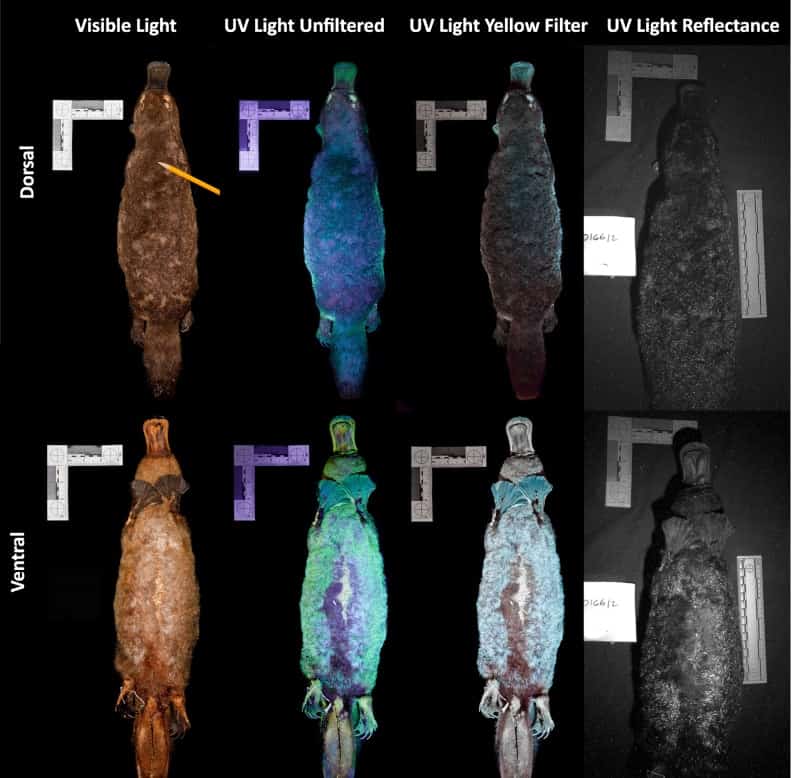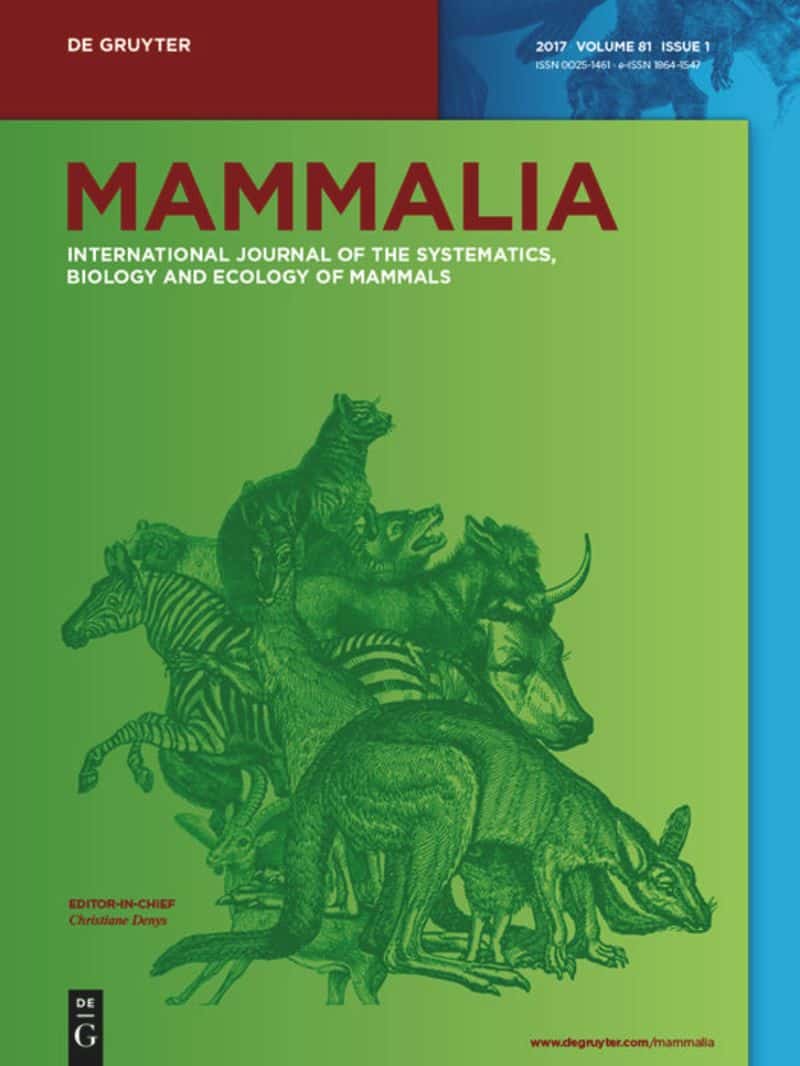Not to Be Outdone: The Platypus Fluoresces, Too
Biofluorescent fur, first observed in marsupials, then in placentals, has now been discovered in the monotreme platypus. This indicates that biofluorescence is all over the mammalian family tree. However, researchers are still questioning the reasons behind it.
The platypus is an ancient mammal with extraordinary talents. It lays eggs, the way the ancestors of all mammals did millions of years ago. Furthermore, it uses mechano-receptors and electro-receptors on its leathery bill to find and capture its prey underwater with its eyes closed, like no other modern mammal. At first glance, the most “normal” mammalian trait of the platypus seems to be its thick coat of brown fur. But as it turns out, the fur of the platypus is remarkable, too.
We — a group of scientists from Northland College and Colorado State University — discovered that the platypus is vividly biofluorescent. The animal’s coat of fur which appears evenly brown under visible light (400 – 700 nanometers), appears bluish-green under shorter wavelength ultraviolet light (385 – 395 nanometers). We observed biofluorescence in 3 platypus museum specimens collected in Tasmania and New South Wales during the 19th and 20th centuries. Male and female platypus specimens all displayed the same pattern of vivid biofluorescence across their coats.

Why (some) animals glow in the dark
When you shine a UV-flashlight or a black light on certain animal species, their bodies absorb those short wavelengths, and emit a longer one — this is called biofluorescence. In fact, there are a lot of biofluorescent vertebrates, but very few of them are mammals. Scientists think that biofluorescence in birds, like the bright yellow biofluorescence of the budgerigar, may help individuals attract more mates. Some reef-dwelling fish species are biofluorescent under ambient blue light — their brightly red biofluorescent patches may enable these fish to communicate with one another.
Since all known mammals with biofluorescent fur are nocturnal, as a next step we want to explore the hypothesis that mammalian biofluorescence may provide a form of camouflage at night. We think biofluorescence might just be one of the many unique things that mammals do to survive and thrive at night.
